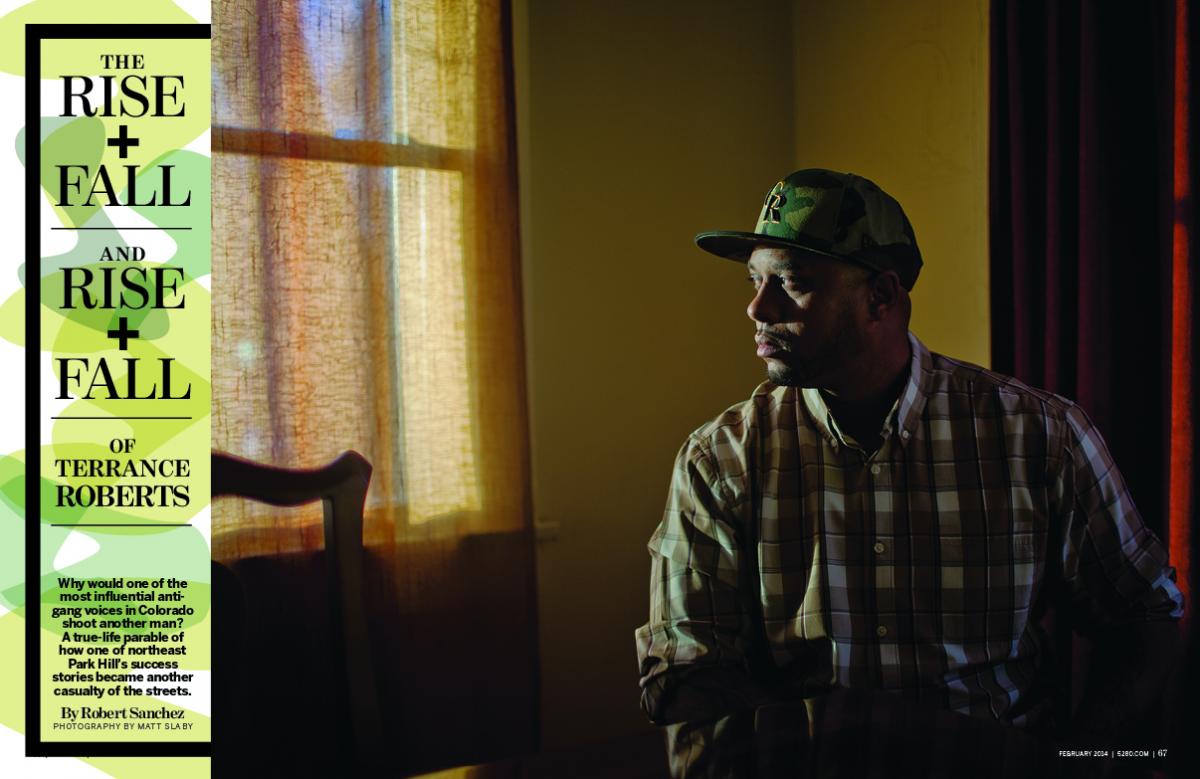The Local newsletter is your free, daily guide to life in Colorado. For locals, by locals.
I started with an idea: Write about gang lives in Denver’s northeast Park Hill neighborhood. Obviously, that was a little broad, but I figured I’d report in the neighborhood, find some good stories and tell them to readers who (mostly) don’t venture into that part of the city. Before I started my project, I was advised that I needed to meet with Terrance Roberts.
Roberts, a friend told me, was Park Hill’s Sherpa. A former Blood himself, he’d take journalists and philanthropists and politicians around, show them the neighborhood, talk about the goods and the bads and the problems that needed fixing. In the past decade, Roberts and his nonprofit, the Prodigal Son Initiative, was the voice of this community. Roberts figured out after-school programs for kids and talked to gang members. He was perhaps best known for helping lead the effort to rebuild the of Holly Square shopping center, which members of a rival Crips gang had burned to the ground years earlier.

In every way possible, Roberts had earned his way into this neighborhood—his neighborhood. As I say in my story, “The Rise and Fall and Rise and Fall of Terrance Roberts”:
“He was the one-time villain who’d become the neighborhood hero. The son of a crack-addicted mother, Roberts had dealt drugs himself, shot and thieved his way across the city, was gunned down during Denver’s summer of violence in 1993, and had served more than a decade, off and on, in federal prisons. By all accounts, he came out a changed man. Roberts found God, renounced his old Bloods affiliation, and took on the Sisyphean task of reducing violence in one of Denver’s poorest and most violent neighborhoods. Handsome, with a crooked smile and personal story of death, poverty, and redemption, he had a presence in his community that no one else could even aspire to.”
We first met in the spring of 2013, and we reconnected multiple times during the summer. He introduced me to a member of the Bloods gang who was heading back to prison; he put me in touch with several other teenagers who’d grown up on the street; he invited me to a rap-video production that was shot near some basketball courts he’d helped build a year earlier. I liked Roberts. He had an earnestness and an honesty that was refreshing. He wasn’t afraid to call-out gang members for hurting their community. He wasn’t ashamed to admit he’d once made the same mistakes.
But on September 20, he shot a gang member during an argument. The moment devastated his neighborhood, hurt the philanthropists and politicians who backed him so fervently. I’d been reporting in northeast Park Hill for several months by then, and I thought nothing could surprise me. This did.
From that day on, I reported and wrote an entirely different story than the one I’d expected. In many ways, because of the turn, it might shed more light on this neighborhood’s issues than anything I could have done.
Read Terrance Roberts’ story at 5280.com/TerranceRoberts.








